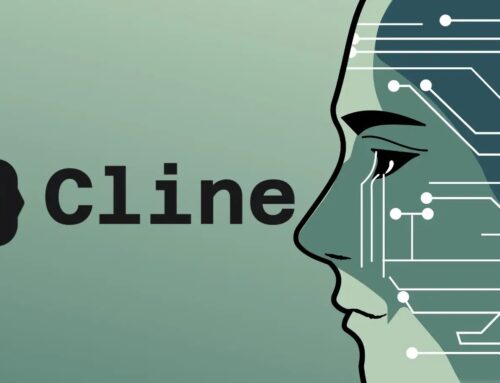
New npm Malware Campaign Verifies if the Visitor is a Victim or a Researcher Before Triggering Infection
A New npm Threat: Deception Before Infection
The npm ecosystem, a cornerstone for JavaScript developers, faces a sophisticated new threat where malware actively differentiates between potential victims and security researchers before initiating an attack. This cunning strategy, identified in a campaign operating under the alias dino_reborn, represents a significant escalation in supply chain attacks, demanding immediate attention from developers and security teams alike. As digital infrastructure increasingly relies on open-source packages, understanding and mitigating such advanced evasion techniques becomes paramount.
The Dino_reborn Campaign: A Closer Look at Evasion
The malicious campaign involves seven distinct npm packages, all meticulously designed to redirect unsuspecting users to cryptocurrency-themed scam websites. What sets this operation apart is its pre-infection verification system. Before delivering its malicious payload, the malware employs tactics to determine if the executing environment belongs to a typical user or a security analyst. This “researcher-detection” mechanism allows the threat actor to evade sandboxes, automated analysis tools, and manual inspection, preserving the malware’s longevity and increasing its success rate against genuine targets.
The core objective of these packages is financial exploitation, specifically luring users into crypto scams. By masquerading as legitimate utilities, dino_reborn leverages the implicit trust users place in open-source libraries, turning essential development tools into conduits for fraud.
Understanding the Threat: NPM Supply Chain Attacks
Supply chain attacks in the open-source community, particularly within npm, leverage the interconnectedness of modern software development. When a malicious package is introduced into the npm registry, it can propagate rapidly through dependencies. Developers unknowingly integrate compromised code into their projects, which then gets distributed to their end-users. The dino_reborn campaign underscores a critical evolution: attackers are no longer just injecting malicious code; they are actively working to ensure that code only executes in environments favorable to their illicit goals.
Remediation Actions for Developers and Organizations
Addressing this evolving threat requires a multi-faceted approach. Proactive measures and continuous vigilance are essential to protect against npm malware campaigns like that orchestrated by dino_reborn.
- Implement Strict Package Auditing: Regularly audit all third-party dependencies using tools that can identify known vulnerabilities and suspicious behavior patterns. Services like Snyk, OWASP Dependency-Check, and npm audit are invaluable.
- Exercise Prudent Package Selection: Before integrating any new package, verify its authenticity, maintainer reputation, and community activity. Prioritize packages from established authors and those with a strong security track record. Look for signs of active maintenance and a healthy issue tracker.
- Employ Sandbox Environments: For critical development or deployment, consider running new or unfamiliar packages within isolated sandbox environments. This can help detect malicious activity before it impacts your production systems, even if the malware uses researcher-detection.
- Leverage Software Composition Analysis (SCA) Tools: SCA tools can automatically scan your codebase for open-source components, identify licensing issues, and crucially, flag known vulnerabilities. Integrating SCA into your CI/CD pipeline ensures continuous monitoring.
- Stay Informed: Keep abreast of the latest cybersecurity threats and vulnerabilities in the open-source ecosystem. Follow security advisories from npm, GitHub, and reputable cybersecurity news outlets.
- Principle of Least Privilege: Limit the permissions granted to build processes and development environments. This minimizes the potential damage if a malicious package executes.
Tools for Detection and Mitigation
Several tools can assist in detecting and mitigating the risks associated with sophisticated npm malware.
| Tool Name | Purpose | Link |
|---|---|---|
| Snyk | Open-source security and developer experience platform for finding and fixing vulnerabilities. | https://snyk.io/ |
| OWASP Dependency-Check | Identifies project dependencies and checks for known, publicly disclosed vulnerabilities. | https://owasp.org/www-project-dependency-check/ |
| npm audit | Built-in npm command to scan projects for vulnerabilities in dependencies. | https://docs.npmjs.com/cli/v9/commands/npm-audit |
| Veracode | Application security testing tools, including software composition analysis (SCA). | https://www.veracode.com/ |
Conclusion: Heightened Vigilance in the Open-Source Frontier
The dino_reborn campaign illustrates a concerning advancement in malware sophistication targeting the npm ecosystem. The integration of researcher-detection mechanisms presents a significant challenge to traditional security analysis methods, emphasizing the need for adaptive and robust defense strategies. Developers and organizations must prioritize supply chain security, employing rigorous auditing, continuous monitoring, and secure development practices to safeguard against these increasingly intelligent threats. Protecting the open-source software supply chain is a shared responsibility, critical for maintaining the integrity and trustworthiness of global software infrastructure.
“`





